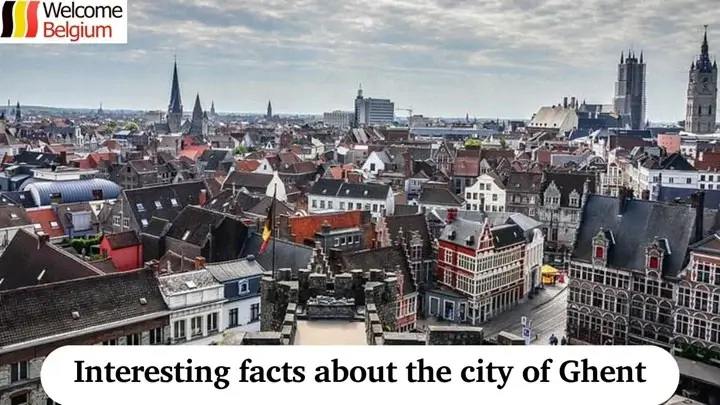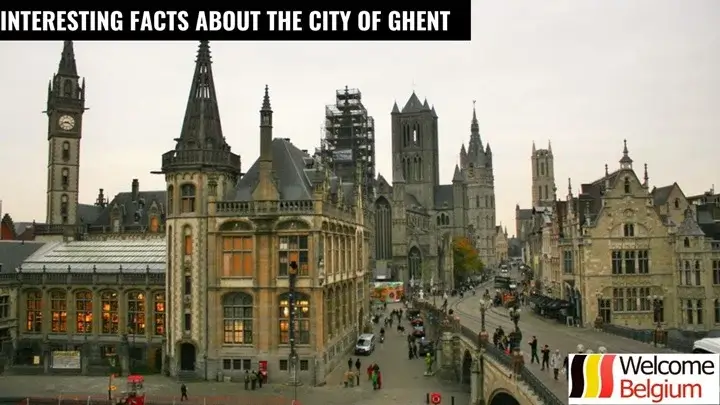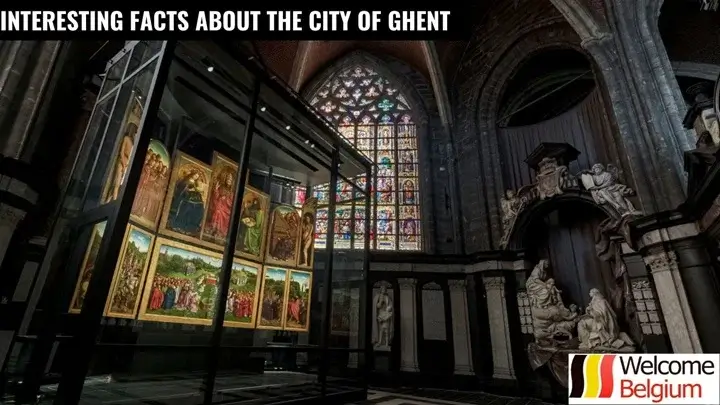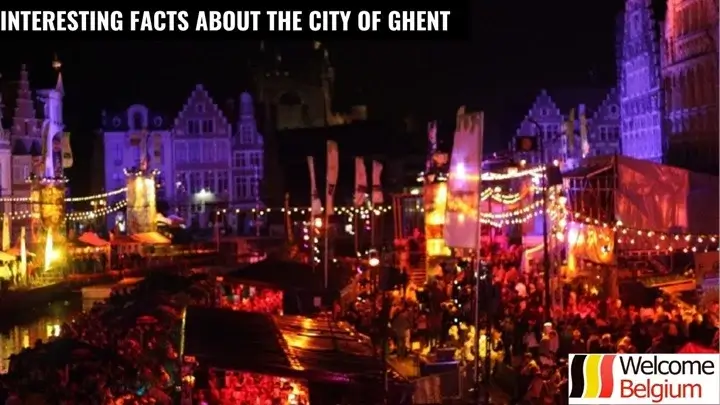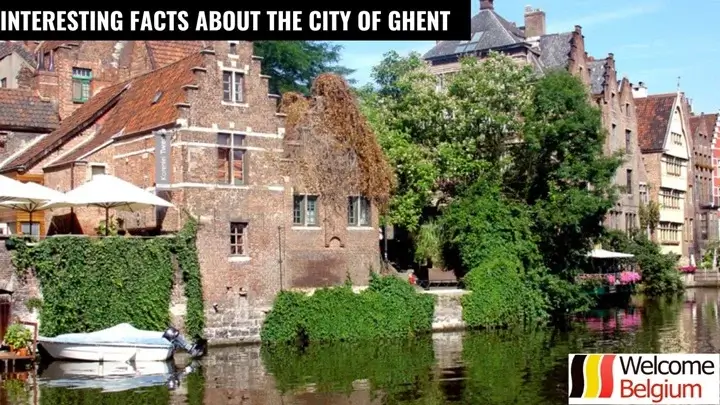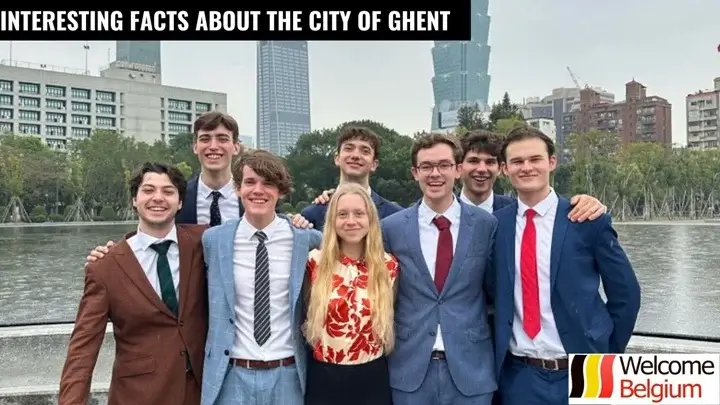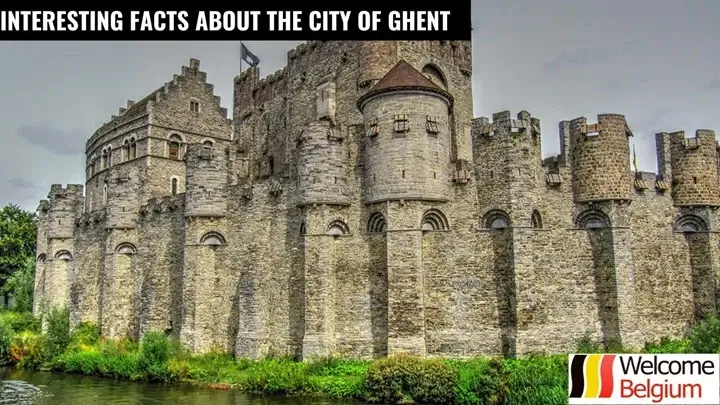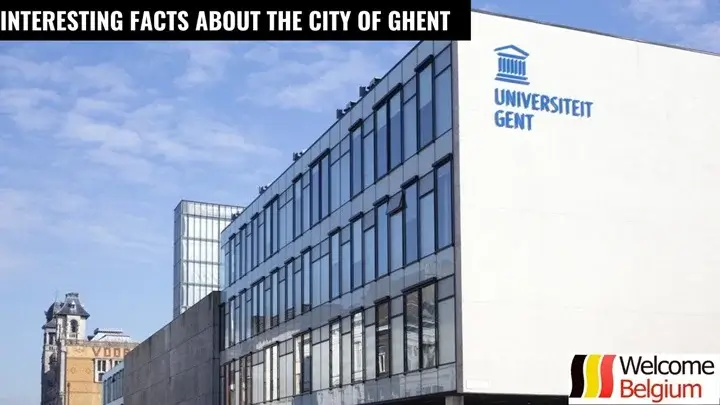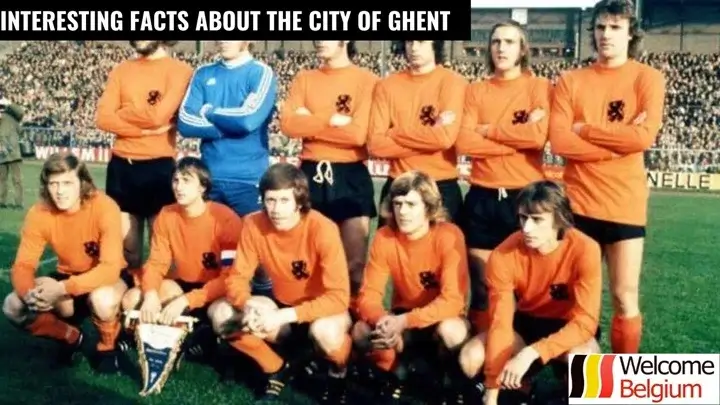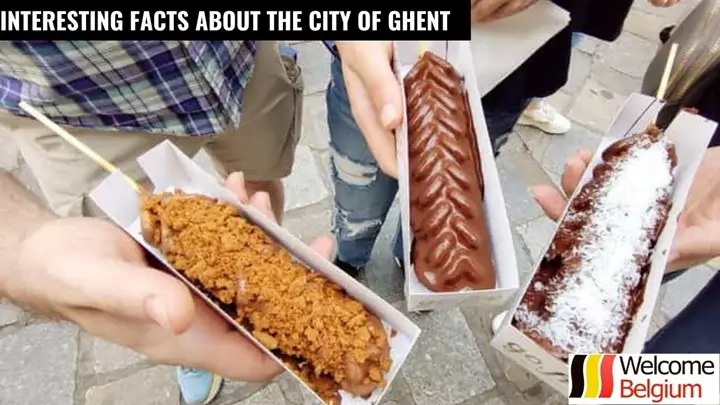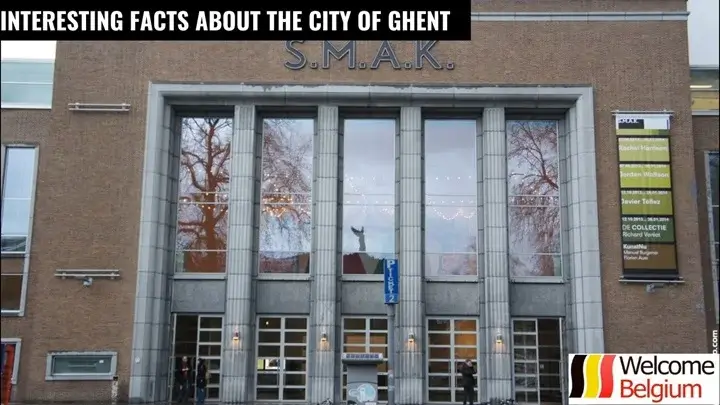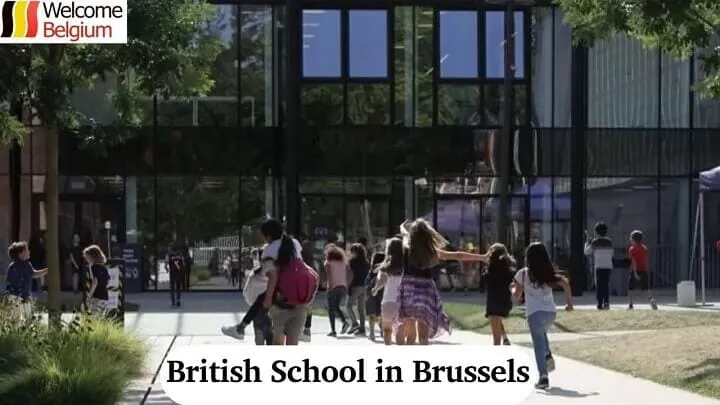If you’ve ever wondered what makes Ghent so unique, these interesting facts about Ghent might surprise you. This city is rich in history, vibrant culture and modern innovation. Every corner of it hides amazing stories. From ancient buildings to unique festivals, Ghent will reveal its secrets to you. By immersing yourself in its atmosphere, you will be able to discover a completely new side of the city.
Ghent was the largest city in Europe in the Middle Ages
During its heyday, Ghent was one of the largest and most influential cities in Europe. In the 13th century, it was second only to Paris in population, making it the largest city in what is now the Low Countries. This is due to the city’s thriving textile industry, which provided the city with wealth and influence. Interesting facts about Ghent are often linked to its strategic location on the Lys and Scheldt rivers, which played a key role in the development of trade.
Ghent’s economic success was so significant that the locals could afford to build magnificent buildings and maintain active trade with other European centers. Among such buildings is the famous Gravensteen castle, which was also used as a symbol of the city’s power. Medieval Ghent was a true example of urban autonomy and independence, which made it unique among other Flemish cities.
- Ghent was an independent city-state until the end of the 18th century.
- Ghent’s trade and textile industry were the main sources of its wealth.
- In the Middle Ages, Ghent was also the center of political life in Flanders.
Despite the loss of its former influence, Ghent remains an important cultural and economic center of the region. Interesting facts about Ghent continue to amaze historians and tourists who come here to learn more about the city’s past.
The Ghent Altarpiece is one of the most famous works of art in the world.
One of the main treasures of Ghent is the famous ” Ghent Altarpiece” or “Adoration of the Lamb of God”, created by the brothers Hubert and Jan van Eyck in 1432. This work is considered one of the masterpieces of Western European painting and is a complex polyptych composition. The Ghent Altarpiece is kept in the Saint Bavo Cathedral. This fact underlines the cultural importance of Ghent as a center of art.
The altarpiece consists of 24 panels, each made using a complex oil painting technique. It depicts scenes from the Old and New Testaments, symbolizing the salvation of mankind through the sacrifice of Jesus Christ. The work on the altarpiece lasted more than ten years, and to this day it remains one of the most discussed and studied paintings in the history of art. Interesting facts about Ghent often include references to this masterpiece, which attracts not only art historians but also ordinary art lovers.
- The altarpiece was one of the first works created using oil paints.
- In 1934, part of the altar was stolen and remains a mystery to this day.
- During World War II, the altar was hidden to avoid being captured by the Nazis.
This unique object demonstrates the high level of craftsmanship of Van Eyck and their contribution to the development of European painting. The methods allow restorers to preserve and study this work, continuing to delight new generations of viewers.
The Ghent Festival is one of the largest cultural events in Europe
Every July, Ghent becomes the center of cultural life in Belgium thanks to its famous Ghent Festival. This festival began in 1843 and has since grown into one of the largest cultural events in Europe. Interesting facts about Ghent always include this festival, as it attracts more than a million visitors each year. The festival lasts for 10 days and includes concerts, theater performances, street shows and other cultural events.
The festival’s special feature is its openness to everyone – most of the events are free and take place right on the streets of the city. In this sense, the Ghent Festival brings together locals and tourists, creating an atmosphere of celebration and fun. During the festival, the streets of Ghent come alive with music, art and theatre performances, making it an important part of the city’s cultural calendar.
- More than 1000 artists and groups participate in the festival.
- More than 300 performances are organized at the festival every year.
- The Ghent Festival is considered the oldest cultural festival in Belgium.
The festival attracts not only the residents of Ghent, but also tourists and independent travellers who come to see the atmosphere of the city and its cultural heritage.
Ghent – a city of green technologies and sustainable development
Modern Ghent actively implements technologies for sustainable development, making it one of the most environmentally oriented cities in Europe. One of the interesting facts about Ghent is that the city strives to significantly reduce carbon emissions and develop environmentally friendly transport. The city actively supports initiatives for the use of bicycles and electric cars, and there is a wide campaign to develop public transport.
Ghent is also known for its green areas and parks, which are part of the city’s infrastructure. Among them is the Sint -Pieters Park, where residents and visitors can enjoy nature in the center of the urban space. In 2009, Ghent became the first city in Belgium to declare one day of the week – Thursday – a “meat-free day”, encouraging residents to make a conscious choice in favor of plant-based food.
- There are more than 400 km of bicycle paths in the city.
- Every Thursday there is a “meatless day” campaign.
- Ghent became the first city in Belgium to implement a sustainable urban development program.
The city’s environmental focus makes it a model for other European cities looking to reduce their carbon footprint and improve the quality of life of their citizens.
Ghent is a student city with a rich academic tradition
Ghent is known as one of the largest student cities in Belgium. It is home to the Ghent University, founded in 1817, the leading educational institution in Belgium. More than 44,000 students from all over the world come here to receive a quality education. Interesting facts about Ghent are also related to this aspect, because university life significantly influences the cultural and social development of the city.
Ghent University is known for its innovative research and high-quality teaching. The university plays an important role in the development of science and technology not only in Belgium but also internationally. The city is also home to other educational institutions, making Ghent an important educational hub in the region.
- More than 44 thousand students study at the university.
- The university offers more than 200 study programs at different levels.
- Ghent University ranks high in world university rankings.
The presence of a large student population makes Ghent a dynamic and lively city, with cultural and educational events taking place on a regular basis.
Ghent Castle Gravensteen – a symbol of medieval history
The Gravensteen Castle, or the Castle of the Counts, is located in the center of Ghent and is one of the most significant historical landmarks of the city. Built in the 12th century, this castle served as the residence of the Counts of Flanders and guarded important trade routes. Interesting facts about Ghent are inextricably linked with this castle, as it is an important element of medieval architecture and the history of the region.
Gravensteen Castle is surrounded by ramparts and deep moats, giving it the atmosphere of an ancient fortress. Inside the castle, there are various exhibitions that allow visitors to learn about the lives of medieval counts, their subjects, and the military history of the time. Its high towers offer magnificent views of the city, making it a popular spot for tourists and photographers.
- The castle was built in 1180 and originally served as a fortress.
- Inside the castle you can see a collection of medieval weapons and armor.
- In the 19th century the castle was used as a prison and then converted into a museum.
The Gravensteen remains a symbol of Ghent, where tourists and independent travelers come to learn about historical and cultural values. They help to recreate the atmosphere of the medieval past.
Ghent University is one of the oldest and most respected in Belgium
Ghent University was founded in 1817 and was the first university in Belgium to offer higher education in the native language. Today, it occupies an important place in the European educational system and is known for its high level of academic preparation. Interesting facts about Ghent include the diverse research initiatives and international programs offered by the university.
The university offers over 200 study programmes, including bachelor’s, master’s and doctoral degrees, and is actively involved in student exchanges with other leading universities around the world. Ghent University is renowned for its research in areas such as biology, ecology and engineering, making it an attractive destination for students from all over the world who want to receive a quality education and participate in cutting-edge research.
- The university has more than 44 thousand students from 120 countries.
- Ghent University participates in more than 700 international projects.
- It regularly ranks high in world university rankings.
Student life in Ghent is rich and varied, which creates a unique atmosphere and cultural exchange.
Ghent World Cup – the largest street festival in Belgium
The Ghent World Cup is an annual street festival that takes place in July and includes more than 250 events such as concerts, theatre performances and street shows. This festival allows residents and tourists to enjoy the cultural life of the city. Interesting facts about Ghent highlight that the World Cup attracts more than a million visitors each year and is an important event in the cultural calendar of the city.
The festival takes place in the centre of Ghent, covering the main streets and squares of the city. The programme of events is varied and there is something for everyone. Participation in the festival is free, making it accessible to everyone. This concept supports the spirit of unity and cultural exchange among the city’s residents and visitors, making the World Cup a unique event.
- More than 200 artists and groups participate in the festival.
- Each year the Ghent World Cup has its own theme, reflecting current social issues.
- Music and street shows are performed in different languages, which highlights the city’s cultural diversity.
The Ghent World Cup is not only a celebration of art, but also an opportunity for people to come together and share the joy of creativity and self-expression.
Ghent’s culinary tradition – from medieval dishes to modern cuisine
Ghent is known for its diverse culinary tradition, which combines both medieval and modern recipes. Interesting facts about Ghent often revolve around local dishes such as “steak and potatoes” and “Flemish stew”, which reflect the region’s rich culinary heritage. Local restaurants offer both traditional and modern dishes, making Ghent an attractive destination for foodies.
Ghent is also known for its sweets, including ” stickers ” – candies that have a rich taste and unique texture. In addition, the city is famous for its beer, which is produced according to traditional recipes. Beer brands such as ” Grimbergen ” and “St. Bernardus ” offer a wide range of drinks, making Ghent a true paradise for beer lovers.
- Ghent hosts an annual gastronomic festival that attracts local and international chefs.
- Many restaurants in the city use fresh produce from local farmers.
- Ghent cuisine is often mentioned in cookery books and gastronomic guides.
Ghent’s culinary tradition continues to evolve, offering locals and tourists the opportunity to enjoy flavours that reflect the city’s rich cultural heritage.
Ghent is one of the largest centres of contemporary art in Belgium
Ghent has become an important centre for contemporary art, attracting the attention of both local and international artists. Interesting facts about Ghent are related to cultural institutions such as the Museum of Modern Art and the St. Peters Art Gallery, which exhibit works by contemporary artists and organise various exhibitions and events.
Contemporary art in Ghent covers a wide range of genres and styles, including painting, sculpture, installations and performances. The city actively supports cultural initiatives and collaborations between artists and local institutions, making Ghent an important player on the international art scene. This creates a unique atmosphere where art becomes accessible to a wider public.
- – Ghent University hosts exhibitions and events dedicated to contemporary art.
- – Every year the city hosts art festivals, which feature works by both famous and emerging artists.
- – Ghent is actively developing projects to create public art installations.
Contemporary art in Ghent is becoming an integral part of the city’s culture, creating a unique and inspiring atmosphere for artists and viewers.
Ghent is a city that holds many interesting facts about its rich history, culture and traditions. From majestic castles to modern art galleries, every corner of the city is filled with unique stories and discoveries. Interesting facts about Ghent not only expand knowledge about the city, but also inspire you to visit it. Ghent offers its visitors a unique opportunity to see how historical heritage and modernity intertwine to create a lively and dynamic atmosphere. This city is truly a treasure trove, where every detail tells its own story.

